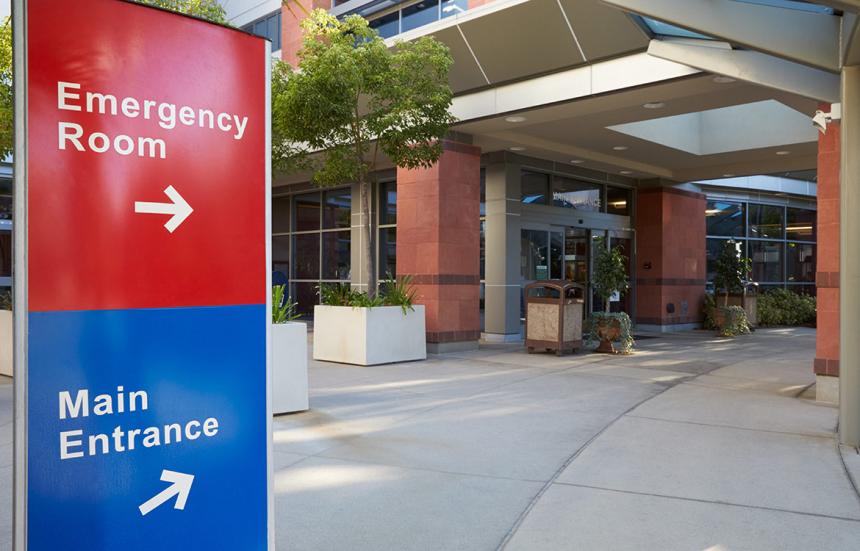When to Go to the ER, Urgent Care or Your Doctor?

It’s an important question -- especially now, in the middle of the coronavirus pandemic. If you’re experiencing symptoms possibly related to COVID-19, another illness or an injury, where do you go? Your primary care doctor office? A walk-in clinic? Urgent care? Or an emergency department?
Each offers different treatment options as well as price points, which are important considerations when deciding where to go for your own symptoms or for someone you love.
Confused about where to go? Here's a brief summary of when you should go to the ER vs. an urgent care facility and reasons to go to a primary care doctor.
When should I go to the ER?
The choice to go to the emergency room is rather straightforward. Emergency departments are set up to treat the most severe symptoms. Examples of when emergent care is needed and 911 should be called immediately if you or a loved one is:
- Choking
- Having breathing difficulties or has stopped breathing
- Suffering from a head injury, particularly if it’s causing fainting or confusion
- Suffering from a neck or spine injury, especially it’s accompanied by loss of feeling or inability
- Suffering from an electric shock or lighting strike
- Severely burned
- Having severe chest pain or pressure
- Having a seizure(s) that lasts between three and five seconds
Here are some other reasons to go to an emergency department.
Keep in mind, the emergency room is the most expensive option. The average emergency room visit costs $1,389, according to a 2017 study. Co-pays, out-of-network charges and uncovered expenses can add up quickly. Costs should be secondary — when you or a loved one are experiencing one of the symptoms above, it’s important to call 9-1-1 and go to the emergency room.
Patients in MDVIP-affiliated practices experienced fewer emergency room visits and used urgent care less often than patients in traditional primary care practices, according to a 2016 study in the journal Population Health Management.
But where do you go when health issues and injuries do not require a trip to the emergency department?
Where to go if you don’t need the emergency department?
The way we receive medical care has evolved substantially over the last 20 years. Walk-in clinics and urgent care clinics weren’t common before the 2000s. In the past, patients experiencing the flu or a cold, a sprain or even a bad headache would call their primary care provider. Their primary care doctor would squeeze them in the same or next day for an appointment.
But most primary care doctors no longer have the time or the capacity to treat urgent care matters. Their waiting rooms and appointment schedules are full. In fact, many practices must double, sometimes triple book patients with urgent issues.
Practicing in this manner has forced the average primary care doctor to treat dozens of patients each day. This means primary care doctors must juggle a practice of 2,300 patients or more and have very limited time with the patients they see.
When should I go to urgent care or a walk-in clinic?
Difficulties getting appointments, long delays in waiting rooms and abbreviated appointments have caused many Americans to supplement their primary care with services from urgent care centers and walk-in clinics. Urgent care centers are convenient, they don’t typically take appointments, are opened longer during the week than primary care offices and offer weekend hours. And because they’re dealing with urgent health issues, they’re often equipped with X-ray machines.
But there are downsides. They may be staffed with a physician, but it’s common to be treated by a nurse practitioner or physician assistant. They don’t offer the full swath of preventive services offered by primary care offices. Their purpose is conveniently treating an urgent medical issue, not full-on primary care. And of course, they don’t know you or your health history like your primary care does. To help providers catch up, patients typically need to complete a lot of paperwork. And urgent care copays are two to three times higher than primary care copays. However, in a pinch, urgent care centers are ideal for treating:
- Small cuts that may require stitches
- Flu and bad colds
- Sprains and muscle pulls
- Shortness of breath
- Fever and headache
- Diarrhea and vomiting
- Abdominal pain
- Sinus infections
- Ear infections
- Minor eye injuries
- Minor fractures
Patients in MDVIP-affiliated practices can typically get urgent care from their primary care doctor, who is available by phone after hours and on weekends.
Walk-in clinics are like urgent care centers — they don’t require an appointment and are usually staffed by physician extenders. They keep hours similar to a primary care office and treat minor issues such as:
- Rashes
- Colds
- Congestion
- Sore throat
- Urinary infections
What is Primary Care?
Primary care is the branch of medicine that serves as the entry point into the health care system and hub for healthcare services. Primary care incorporates health promotion, disease prevention, patient advocacy, health maintenance, counseling, patient education, diagnosis and treatment of acute and chronic illnesses. Primary care physicians are specifically trained to provide first contact comprehensive care and continuing care for those with an undiagnosed sign, symptom or health concern. They collaborate with, consult and refer to other health professionals as needed and work with patients and families to teach them how to be partners in their or their loved one’s care.
When should you go to your primary care physician?
If you can get a primary care appointment, your doctor’s office is a better choice over an urgent care or walk-in clinic. Why? Your PCP knows your history, knows what medications you’re taking and should have a more complete picture of your overall health. They’re supposed to be your partner in health, helping you navigate the healthcare system.
